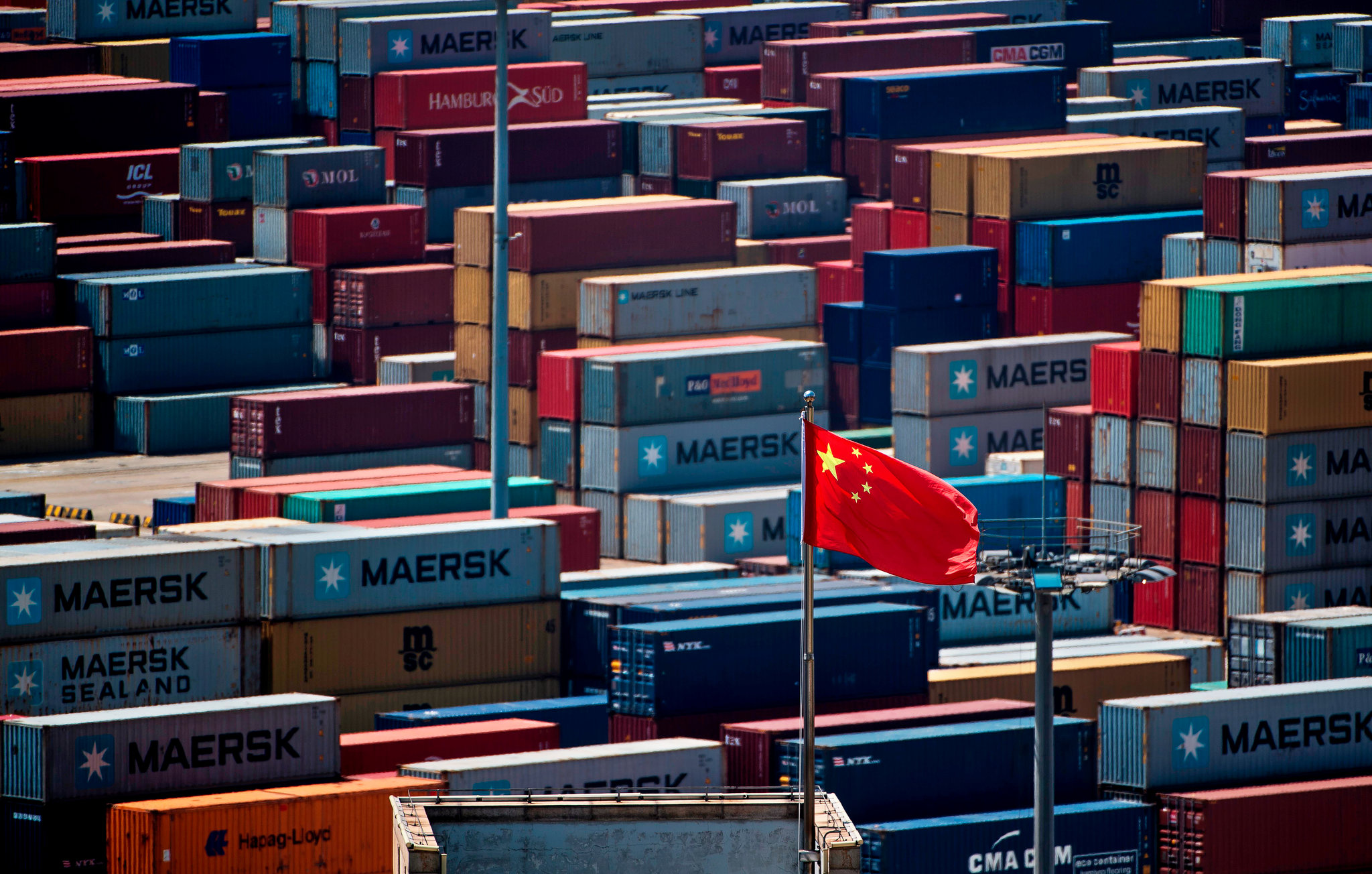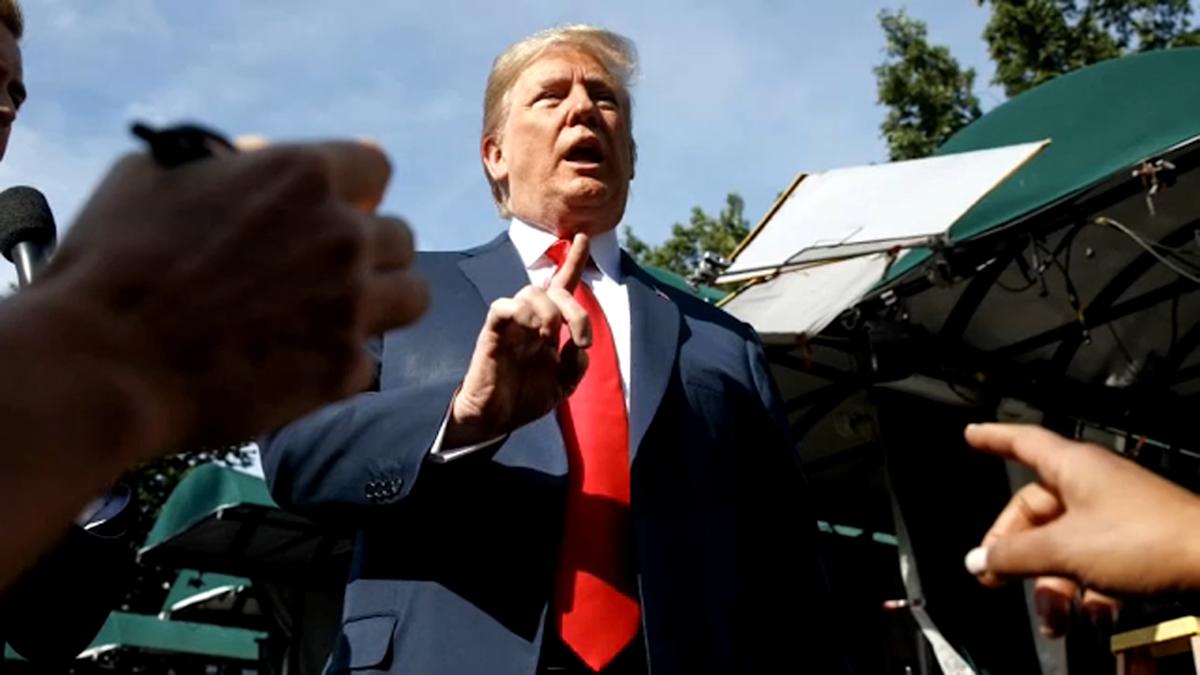How Tariffs Threaten China's Export-Led Growth Model

Table of Contents
The Impact of Tariffs on Chinese Exports
Tariffs, essentially taxes on imported goods, have profoundly impacted China's export-led growth strategy. The imposition of tariffs increases the price of Chinese goods in international markets, reducing their competitiveness and threatening long-established trade relationships.
Reduced Global Demand
Tariffs directly reduce global demand for Chinese products. Increased prices make Chinese goods less attractive to consumers and businesses compared to domestically produced goods or those from other countries that haven't faced similar tariff increases.
- Decreased export volume: Numerous reports indicate a decline in the volume of Chinese exports following the implementation of tariffs.
- Loss of market share: Chinese companies have witnessed a significant loss of market share in key export markets, particularly in the US and Europe.
- Impact on specific sectors: Industries like textiles, electronics, and agricultural products have been disproportionately affected, experiencing significant drops in export revenue. For example, the US tariffs on Chinese steel and aluminum significantly impacted Chinese steel manufacturers.
The consequences are far-reaching. Reduced demand translates into lower production levels, impacting factories, workers, and the overall economic performance of China.
Supply Chain Disruptions
Beyond reduced demand, tariffs create substantial disruptions within global supply chains, which China is heavily integrated into. This disruption increases production costs and adds complexity to the manufacturing and distribution of goods.
- Increased production costs: Companies face increased costs for raw materials and intermediate goods due to tariffs on imported components.
- Delays in shipping: Navigating tariff complexities and trade regulations adds significant time to the shipping process, impacting delivery timelines and increasing costs.
- Difficulties sourcing raw materials: Tariffs can disrupt the flow of crucial raw materials, forcing Chinese manufacturers to seek more expensive or less reliable alternatives.
- Relocation of manufacturing facilities: Some companies are relocating their production facilities outside of China to avoid tariffs, leading to job losses and economic setbacks within China.
The interconnected nature of global supply chains means that even seemingly minor tariff increases can trigger cascading effects, impacting multiple industries and countries.
Economic Consequences for China
The impact of tariffs extends beyond the immediate effects on export industries. The consequences for the Chinese economy are significant and far-reaching.
GDP Growth Slowdown
Reduced exports directly translate into a slowdown in China's GDP growth rate. Export-oriented industries contribute significantly to the overall economy, and their decline has a ripple effect across multiple sectors.
- Decline in manufacturing output: The manufacturing sector, a crucial driver of China's economy, experiences a significant decline in output due to lower export demand.
- Job losses in export-oriented industries: Reduced production leads to widespread job losses in factories and related industries, impacting millions of workers.
- Reduced investment: Uncertainty about future export prospects discourages investment in new factories, equipment, and technology.
The relationship between export performance and overall economic growth in China is undeniable, and the impact of tariffs on this relationship cannot be overlooked.
Increased Domestic Unemployment
The decline in export-oriented industries has directly led to significant job losses, particularly in manufacturing hubs, potentially causing social and economic instability.
- Impact on employment in manufacturing hubs: Cities reliant on export-manufacturing face high unemployment rates, leading to social unrest and economic hardship.
- Potential for social unrest: High unemployment rates can fuel social unrest and dissatisfaction with the government.
- Government response to unemployment: The Chinese government is actively implementing policies to mitigate unemployment, including retraining programs and investment in domestic industries.
Addressing the unemployment challenge is crucial for maintaining social stability and ensuring the long-term health of the Chinese economy.
China's Response Strategies
Faced with these challenges, China is actively pursuing a multi-pronged strategy to mitigate the negative impacts of tariffs and adapt to the changing global trade landscape.
Diversification of Export Markets
China is aggressively seeking to reduce its dependence on specific markets (like the US) by expanding its trade relationships with other countries.
- Increased trade with Africa, Latin America, and Southeast Asia: China is actively investing in and fostering trade relationships with emerging economies.
- Exploration of new trade agreements: China is pursuing new trade agreements with various countries and regions to secure access to new markets and reduce reliance on existing ones.
This strategy aims to create a more resilient export model, less vulnerable to disruptions in specific trade relationships.
Focus on Domestic Consumption
To reduce its reliance on exports, China is actively promoting domestic consumption to drive economic growth.
- Investment in infrastructure: Significant investments are being made in infrastructure projects to boost domestic demand.
- Promotion of consumer spending: Government policies are aimed at encouraging consumer spending and improving living standards.
- Development of the domestic market: China is working to develop a strong and vibrant domestic market capable of supporting its economic growth.
This shift toward domestic consumption represents a fundamental change in China's economic strategy.
Technological Advancement and Innovation
China is investing heavily in research and development to enhance its technological capabilities and move beyond low-cost manufacturing.
- Investment in 5G technology, AI, and renewable energy: Significant resources are being channeled into cutting-edge technologies.
- Focus on technological self-reliance: China is aiming to reduce its reliance on foreign technology by developing its own technological capabilities.
This focus on innovation aims to create higher value-added exports and reduce vulnerability to external economic shocks.
Conclusion
Tariffs pose a significant challenge to China's export-led growth model, impacting its economic growth, employment, and global standing. While China is actively implementing strategic responses to mitigate these effects, the long-term consequences remain uncertain. Understanding how tariffs threaten China's export-led growth is crucial for comprehending global economic shifts. Further research into the evolving trade landscape and China's adaptive strategies is essential. Stay informed about the evolving impact of China's export-led growth and the global trade dynamics.

Featured Posts
-
 T Mobiles 16 Million Data Breach Fine Three Years Of Security Failures
Apr 22, 2025
T Mobiles 16 Million Data Breach Fine Three Years Of Security Failures
Apr 22, 2025 -
 127 Years Of Brewing Anchor Brewing Company Announces Closure
Apr 22, 2025
127 Years Of Brewing Anchor Brewing Company Announces Closure
Apr 22, 2025 -
 Supreme Court Hearing Trumps Obamacare Defense And Its Implications For Rfk Jr
Apr 22, 2025
Supreme Court Hearing Trumps Obamacare Defense And Its Implications For Rfk Jr
Apr 22, 2025 -
 Papal Conclaves Explained The Process Of Selecting A New Pope
Apr 22, 2025
Papal Conclaves Explained The Process Of Selecting A New Pope
Apr 22, 2025 -
 The Difficulties Of Automating Nike Sneaker Manufacturing
Apr 22, 2025
The Difficulties Of Automating Nike Sneaker Manufacturing
Apr 22, 2025
